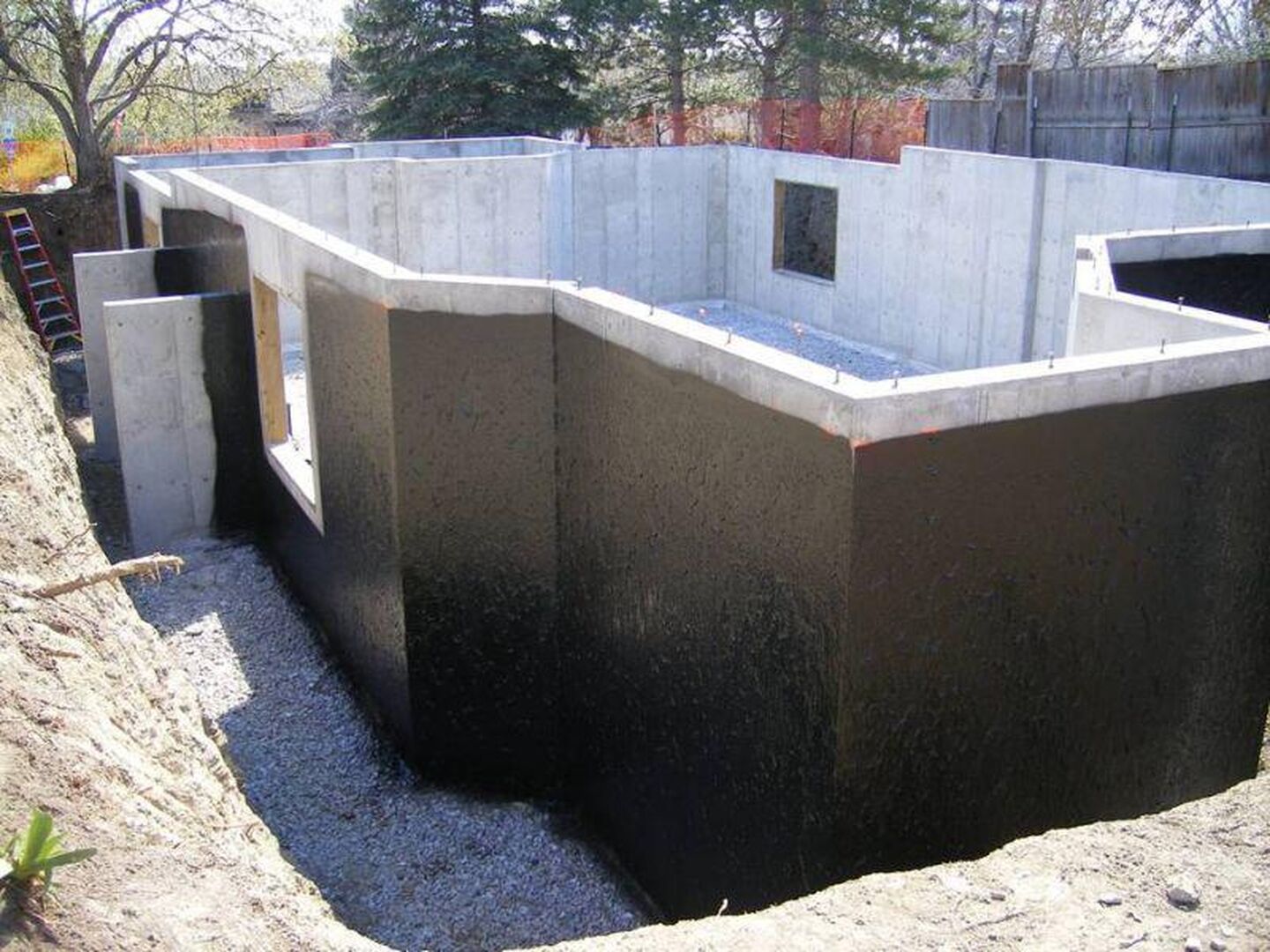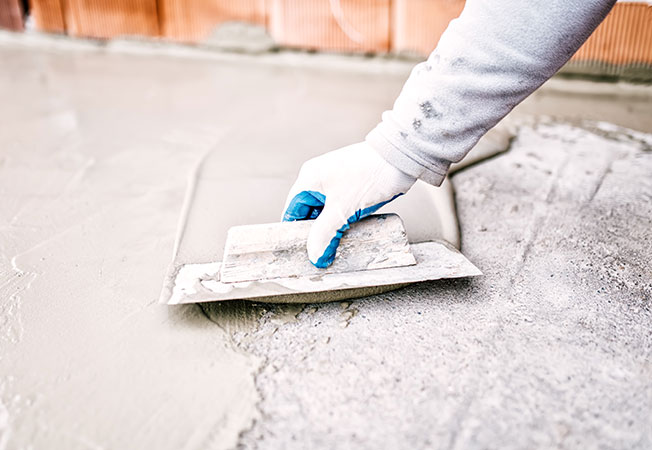How Landscape drainage Omaha Safeguards Your Foundation from Heavy Rain
Wiki Article
Just How Waterproofing Works: A Detailed Consider Strategies and Technologies
Waterproofing is necessary for protecting structures from moisture-related damages. It includes numerous strategies and technologies that produce obstacles against water intrusion. Conventional methods, such as compressed clay, coexist with modern technologies like liquid-applied membranes. Recognizing the subtleties of these methods is vital for efficient application. The performance of any type of waterproofing service hinges not only on the strategies utilized but likewise on ongoing maintenance and examination. What are the crucial factors that affect long-term performance?Recognizing the Basics of Waterproofing
Waterproofing is an essential procedure that protects structures from water breach, which can result in significant damage gradually. This approach includes the application of various products and strategies developed to develop an obstacle versus moisture. The main objective is to stop water from permeating surface areas, which can cause deterioration, mold growth, and architectural instability.Various variables affect the choice of waterproofing approach, consisting of the type of structure, its location, and environmental problems. Understanding the physics of water movement and the residential or commercial properties of different products is essential in choosing a reliable waterproofing solution.Effective waterproofing not just safeguards structures but also improves their long life and stability. Commonly, it is incorporated right into the layout phase of construction to guarantee complete defense. As recognition of water-related concerns expands, the importance of recognizing waterproofing basics becomes increasingly clear to architects, contractors, and residential or commercial property owners alike.Traditional Waterproofing Methods
Typical waterproofing approaches have been utilized for centuries, counting on tried and true techniques and products to guard frameworks from water damages. One of the oldest approaches includes using clay, which, when compressed, produces a natural obstacle against dampness. Furthermore, asphalt, a sticky, black product stemmed from oil, has been employed for its waterproof homes, typically applied to roof coverings and foundations.Another method involves the application of lime-based plasters, which supply a breathable layer that permits wetness to run away while avoiding water ingress. Thatch roof covering, a typical method still seen in some societies, uses exceptional waterproofing due to its securely loaded straw layers.Moreover, the usage of rock and block has been prominent, as these products are naturally resistant to water when appropriately installed. On the whole, typical waterproofing techniques emphasize the significance of picking suitable products and construction methods to improve durability against water breach.Modern Waterproofing Technologies
Advancements in contemporary waterproofing modern technologies have reinvented the means structures are shielded from water damage. Ingenious strategies such as liquid-applied membranes and advanced sealants have actually enhanced the efficiency and versatility of waterproofing services. These modern technologies allow for seamless application, minimizing the threat of leakages and ensuring extensive insurance coverage over intricate surfaces.Moreover, the assimilation of clever technologies, such as wetness sensors and automated tracking systems, allows real-time assessment of waterproofing performance. This proactive technique assists in timely maintenance and decreases long-term repair costs.Additionally, advancements in spray-applied finishings provide quick application and excellent attachment, adjusting to different substrates while offering robust defense. Strategies like polymer-modified systems additionally improve versatility and longevity, making them appropriate for varied environments. Generally, modern-day waterproofing modern technologies not just alleviate water intrusion however likewise add to the long life and sustainability of structures, marking a substantial change in the sector.Materials Made Use Of in Waterproofing
The efficiency of waterproofing options heavily depends on the materials made use of in their application. Different materials are utilized to create obstacles against water ingress, each with one-of-a-kind residential properties suited for different settings. Generally used products include membranes, coatings, and sealants.Liquid-applied membranes, often made from polyurethane or acrylic, develop a smooth barrier that adjusts to intricate surfaces. Sheet membranes, typically built from rubber or thermoplastic, deal toughness and are perfect for bigger locations. Additionally, cementitious waterproofing materials, made up of cementitious compounds, offer superb adhesion and flexibility.Sealants made from silicone or polyurethane are necessary for joints and seams, making certain comprehensive defense. click here to read Innovative products, such as geo-composite membranes, combine multiple functions, improving performance. In general, the selection of waterproofing products is important in achieving lasting and reliable water resistance, tailored to specific job demands and ecological conditions.
Common Applications of Waterproofing
Waterproofing plays an important role in different industries, making sure the long life and integrity of frameworks. Usual applications consist of property options that secure homes, industrial facilities that safeguards services, and commercial setups that call for robust security against dampness. article source Recognizing these applications highlights the significance of waterproofing in preserving both safety and functionality throughout different environments.Residential Waterproofing Solutions
Several house owners deal with challenges with dampness invasion, making effective property waterproofing options important. Various approaches exist to address this concern, including exterior and interior waterproofing systems. Inside services typically involve the application of sealers and finishes to basement wall surfaces, which assist prevent water infiltration. Exterior approaches commonly include the installment of drain systems and water-proof membranes that draw away water far from the foundation.Additionally, property owners may consider sump pumps to eliminate water buildup and dehumidifiers to regulate humidity degrees. Proper grading and the use of gutters likewise play an important duty in managing water circulation around the home. By implementing these methods, homeowners can substantially reduce the danger of water damages and mold and mildew growth, making sure a completely dry and secure living atmosphere.
Commercial Infrastructure Protection
Efficient waterproofing solutions play an essential role in the defense of commercial facilities. Sump pump discharge drainage Omaha. These techniques are vital for safeguarding buildings, auto parking structures, and bridges from water damage, which can jeopardize architectural integrity and cause pricey repairs. Typical applications consist of the installment of membranes, coverings, and sealants that develop barriers against wetness seepage. Locations such as basements, roofing systems, and outside wall her response surfaces are often focused on to guarantee durability and longevity. Additionally, waterproofing systems can enhance energy efficiency by avoiding water-related concerns that may lead to mold growth and wear and tear. By applying durable waterproofing actions, building proprietors can shield their investments and preserve operational efficiency, ultimately adding to the total sustainability of business facilitiesIndustrial Applications Summary
While numerous industries encounter distinct challenges, the requirement for reputable waterproofing solutions stays a consistent in industrial applications. Industries such as production, construction, and power frequently come across environments where moisture exposure can threaten architectural integrity and functional performance. In manufacturing facilities, waterproofing is essential for safeguarding machinery and products from water damages. In construction, it safeguards foundations and cellars versus groundwater seepage. The power industry depends on waterproofing for the protection of equipment in hydroelectric plants and offshore structures. Furthermore, food handling industries use waterproofing to guarantee hygiene and compliance with security criteria. Overall, efficient waterproofing solutions are essential for enhancing durability, security, and efficiency throughout different industrial settings.
Upkeep and Longevity of Waterproofing Solutions
Although waterproofing solutions are created to use lasting security versus moisture intrusion, regular upkeep is important to assure their performance and durability - Sump pump installation & replacement Omaha. Regular examinations play a considerable function in recognizing prospective issues such as splits, peeling, or signs of water damages. Addressing these problems without delay can stop further damage and costly repairs.Additionally, cleansing the surface of waterproofed areas assists get rid of dirt and particles that might endanger the integrity of the waterproofing barrier. It's likewise recommended to reapply protective layers or sealants as advised by producers to maintain excellent performance. Environmental variables, such as UV exposure and extreme weather problems, can impact the lifespan of waterproofing materials, making routine assessment importantRegularly Asked Concerns
Can Waterproofing Be Applied in Winter?
The inquiry of applying waterproofing in cold climate elevates worries about adhesion and treating. Several products may not execute at their best in low temperature levels, requiring mindful selection and consideration of details guidelines for efficient application.For How Long Does Waterproofing Commonly Last?
The duration of waterproofing effectiveness varies based on materials and environmental aspects. Normally, it can last from 5 to 10 years, however normal upkeep and assessments are vital to ensure peak performance and durability.Is Do It Yourself Waterproofing Effective and Safe?
The efficiency and safety and security of do it yourself waterproofing rely on numerous aspects, consisting of worldly high quality and application method. While some individuals achieve adequate results, others might encounter concerns that endanger long-lasting security and structural honesty.What Are the Signs of Failing Waterproofing?
Signs of failing waterproofing consist of visible water stains, peeling off paint, mold growth, moldy smells, and moisture in wall surfaces or ceilings - Sump pump installation & replacement Omaha. These signs suggest jeopardized obstacles, requiring timely examination and prospective remediation to protect against additional damageExactly how Do I Choose the Right Waterproofing Specialist?

Report this wiki page